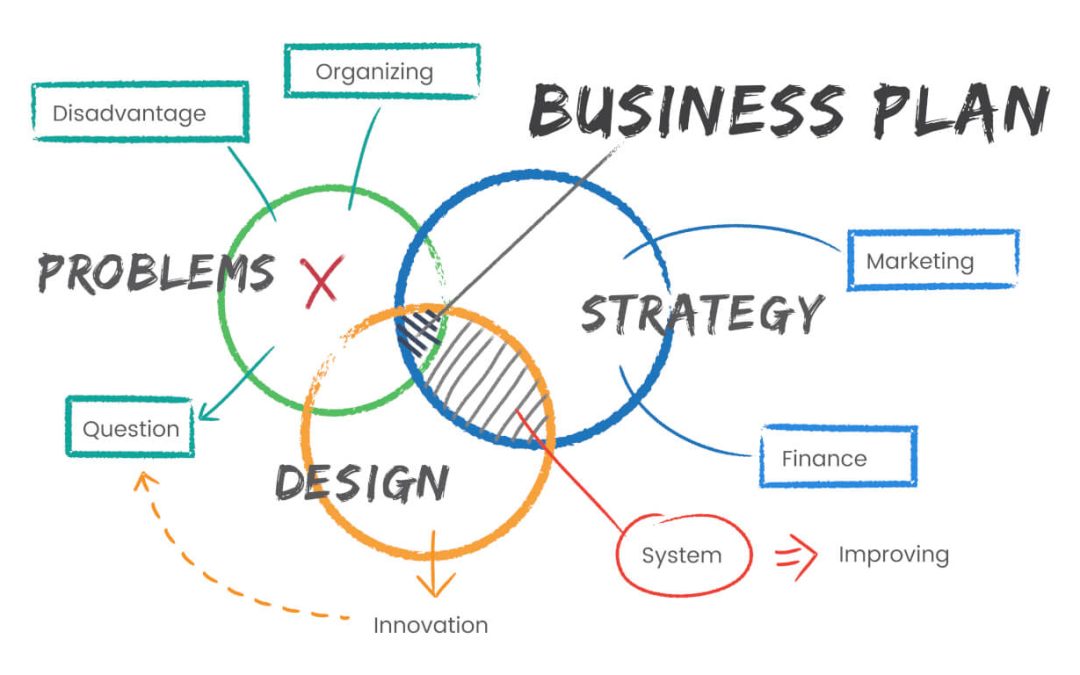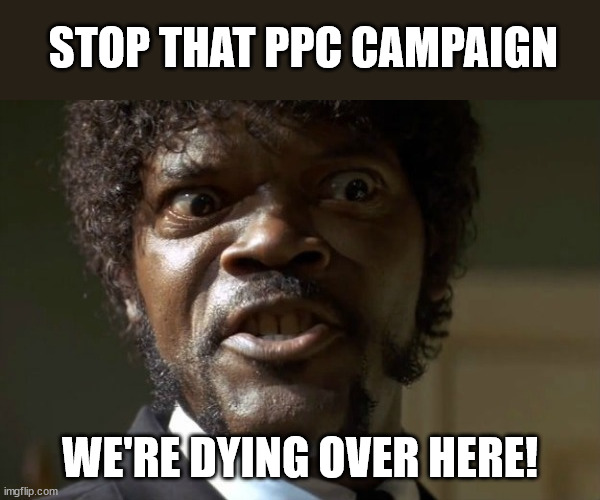Facebook groups for marketers are awesome. If you haven’t made it your daily routine to visit, read and contribute, I encourage you to get started.
This morning, I ran into a question on the challenges of marketing agencies, how to automate processes and minimize the risk of relying on specific team members for key deliverables.
The conversation quickly got a few mandatory derogatory comments and push-backs, but we got back on track.
Building and keeping a team is the foundation of any business growth. You can’t grow your business if the team doing that business isn’t your reliable source of stable, predictable results.
So business owners and marketing agencies struggle to figure out this simple question: What are the ways to build some sort of team cohesion, and how to go about achieving this?
In the Facebook discussion, the person who posted the question tagged me specifically, asking my input on the matter. And then, when someone politely asks for your input, you go the extra mile… right? I mean, that’s the decent thing to do… 🙂
The Scenario

Here’s the actual question that was posted, with me tagged on the post:
Igor Mateski, so I have a great hypothetical question that I think if you answer with your knowledge and experience, it would really give me the perfect answer that I’m looking fo:
If your entire staff said they would send their resignation letters today and they would leave in 3 months. The job market is not good now for digital marketing employers and you know for a fact that you will not be able to find talent that are even a quarter as good as the staff you had that are leaving. You also might have to cut a position or two. How would you go about handling the situation aside from hiring staff to replace them? What position(s) would you give up on hiring and how would you replace their function in a cost efficient way? What preparation in your organization would you make as far as recording what the old team has done? Would you make any software changes to prep for less experienced staff, and less employees in general. Also, What preparations would you make so the new employees can pick up where the old staff left off?
If you can give some quick feedback to that question, I think it would answer mine
Thanks!
As I started writing my response, it soon turned into a large comment. Too large to be a comment. Ergo, the existence of this blog post.
The Tale Of Two Team DNAs: Cults vs. Gearboxes
Before I dig into this weird dichotomy, I feel an apology and explanation is a must.
I hold a degree in Theology. And I’ve spent 5 years doing Mechanical Engineering. So, my two modes of default thinking are religion and mechanics. These are the feet I stand on, walk with, live with. Ain’t easy.
It’s usual for office brawls to happen every once in a while. Put a bunch of people in a room, close them for 8 hours every day, for months and years, and things inevitably get messy.
I’d throw two extreme examples of solving the situation. But there’ll be a gazillion shades of gray between these extremes.
The first one, turn your team into a cult. The other one, turn them into heartless parts of your marketing machine. Gears.
So let me set the pegs at the opposite ends of the spectrum.
The Team as a Cult

A great way to ensure team cohesion is to get them religiously dedicated to a common cause. Get them committed to the cause, and to each other to such extent that the inter-personals resemble a cult rather than a company.
I’ve seen that this works on a smaller scale. So with big companies, the way to achieve this is to chop up the workforce into manageable groups and give each group an identity that’s greater than the sum of individuals.
I’ve seen this done with Apple, Tesla, the Chevy Camaro division, Ford Mustang division, Harley Davidson, AMG, Alfa Romeo, and so on. They are trained to believe in their product so much that the group becomes like a cult. Where the object of worship is their product.
This way, companies turn the employment contract into a personal thing. Like:
- there’s no other place you could work on a Mustang production line.
- There’s no other company where you can create Apple products.
- there’s no other company that builds bikes with a passion like Harley Davidson.
So even if a competitor slips an offer with a higher salary, employees won’t be seeing that as an offer at all. Cause it’s just not Mustang. Or Apple, or whatever.
This is difficult to achieve, especially for marketing agencies where their service is commoditized.
And this is our corporate sin. We can’t and shouldn’t commoditize services. What we do is creative, highly skilled work spanning different people with widely different skill-sets that have somehow learned to speak the same language and send out solid business solutions for clients, time and time again.
Even in highly regulated services like Legal, Accounting, Dentistry, etc. folks still find a differentiating factor. And it’s that differentiating factor that will help marketing agencies achieve team cohesion that stands up to the temptations of higher salaries, better employment perks, or whatever.
Some call it Corporate Culture, but that’s just too… mechanistic. The corporation cannot have a culture. The people belonging to teams within that company can (and must) have a certain tribal mentality, a subculture that they all ascribe to. It’s the small teams within that company that have group identities developed to such an extent that they love coming to work, and that dedication is strong enough, and effective enough, to offset any turbulence that will come. It’s not an IF. It’s a WHEN.
So, one way to get a team to stick together is to give the team a common belief system revolving around what they do AS A TEAM, in your company.
This, of course, doesn’t, and MUST NOT mean that you manipulate people to stay and work with you without a decent salary. BUT, you make sure to develop a culture where salary is not the decisive/divisive factor.
The Team as a Gearbox

Thanks to persistently declining birth rates in the Western world for decades, we’re experiencing a shortage of people to work with. (Please Note, I’m not using the term Workforce).
This got people thinking that, if we document the workflows, procedures, fallbacks, feedback loops and so on, and train individuals into being super-efficient into doing a single thing, a single task from that massive workflow, we’d be less dependent on individual team players.
When you take a complex mechanism like a gearbox and break down its operation to specific steps and deliverables, you can construct gear for every operation. Then, if one gear breaks, you swap out the bad part and keep the machine going.
I’ve seen companies taking this approach with Services too.
Take SEO Audits for example. If you document the process to a Step by Step manual for running websites through ahrefs, keywordspy, excel tables and so on, you can get any computer-literate person, and train them within a day or two to run the tools, look for patterns, and document them. Then in a bit more time, you can train them to extract meaning from those patterns, and then in a bit more training, propose business steps to mitigate or leverage whatever the data shows.
Website development workflows and checklists abound. It’s the drive of people to depersonalize work, and boil it down to mechanic steps that anyone can take, and get to the same place, more or less.
If you ever saw a production line, you’ve probably seen that each station has one or two people working.
The task each station does is so specific that it gets done within a minute or two. And then the production line moves one step forward.
Another wire to attach, another bolt to tighten, bell rings, you take one step back, and in comes the next item.
Attach wire, tighten a bolt, step back.
Bell rings.
Step back. Step forward, attach the wire, tighten the bolt, step back, bell rings, new item lands on your station.
In these companies, there’s very little personal touch between people on the production floor, people in Quality Control, people in mid-management, and absolutely no connection between blue-collars and the C-suite. Appealing, right?
But if you’ve spent some time on Earth, studying our history, philosophy of work, psychology, sociology, etc… you can recognize the needs that societies had that created the playground for such companies.
We invented gearboxes out of necessity to move forward.
Faster.
Reliably.
Affordably.
Relentlessly.
Forever and ever.
But these two ways of organizing work for standardized output, cults, and gearboxes, don’t have to be so opposite. Let’s move “beyond the either-or mentality” and find a solution. BTW, this Beyond the Either-Or, it’s part of my diploma work title. But that’s another story, for another blog post.
Let me offer a solution to the office brawl now.
How To: Team Cohesion For Spiritual Gearboxes

Here’s a challenge: How would a spiritual gearbox look like?
Seriously. Take a minute to think about it. Will be fun, promise.
Let me cut to the chase.
You want a team that knows what they do, how they do it, and most importantly, WHY they do it.
Ever heard of Simon Sinek’s Know Your Why book? There, he explains that a company needs its WHY. A team needs to know WHY they exist. One morning I had an inspiration of putting together what I call, The WebMaxFormance Reason For Productive Existence. It’s a document explaining that we work so we can help good business owners achieve business growth on a budget. AKA, Fortune 500 Marketing for Small to Mid-Sized Businesses. And it’s been our mantra for years.
Now, we’d get nowhere if we only passively believed this idea. We had to put on paper EVERYTHING that we do. We had to hone the workflows, find faults, optimize workflows, identify critical points, cover these points with specific quality control measures, work the findings back into the workflows and so on.
It’s been a long process. And it’s still on the workbench. We’re still documenting, fine-tuning, optimizing, verifying.
Then we have each person’s work described as workflows. Each team member’s workflow is integrated into playbooks for teams: WordPress web dev, Design, Branding, Copywriting, Paid Ads, etc. That way, we have a company Work Novel. Or, at least we’re trying to get there.
When we know who’s doing what, how they do it, and when each person knows WHY they’re doing things the way they’re asked to… there’s a clearer vision of the greater reality.
Now, granted, this is not the silver bullet to team cohesion. We all go through crises. We all get tempted by a higher paycheck. Or by an employee who’s had more experience and is willing to do the same work and then some, at a lower salary.
But team members aren’t gears. They’re people. We live together for 8 hours every day. Sometimes, things are serious and we have to dig in and deliver. Sometimes, thank God, things are relaxed, and there’s plenty of time to extend the 30-minute lunch break to an hour of eating, laughing, watching TV together, and just being ourselves.
Will it always work? NO. Cults fall apart. Gearboxes too. Stuff happens, man. Get over it. Move on.
Back to you. What do you think of this topic? Can you find yourself in a Cult or a Gearbox, or in a spiritual gearbox? Or, hopefully, you have another facet to add? Please share your thoughts in the comments below, and don’t forget to share this text on your social media profiles. If nothing else, at least folks can have fun imagining spiritual gearboxes 🙂










